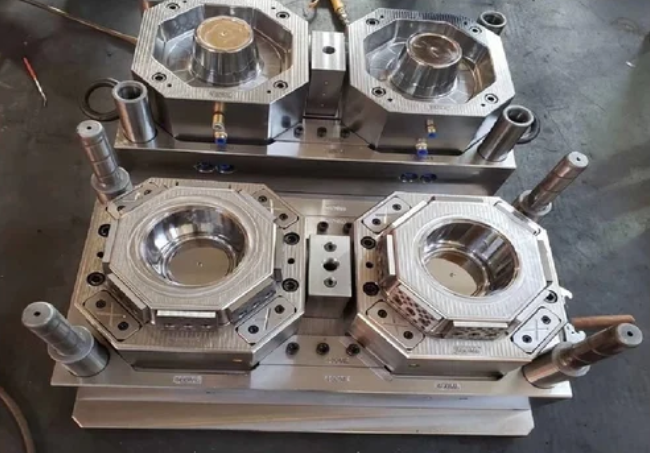Medical Molding Parts: Precision Engineering for the Healthcare Industry
The healthcare industry is constantly evolving and advancing in its pursuit of better patient outcomes, improved efficiency, and increased cost-effectiveness. One crucial aspect of this progress is the development and use of medical molding parts. These precision-engineered components play a significant role in medical devices and equipment, enabling healthcare professionals to provide high-quality care to patients.
Medical molding parts are manufactured using a specialized process called medical injection molding. This process involves injecting molten material, typically thermoplastics, into a mold cavity. The mold is then cooled and opened, resulting in the desired shape of the medical part. This technique allows for the production of complex and intricate designs that meet the strict requirements of the healthcare industry.
The precision engineering behind medical molding parts is essential for several reasons. First and foremost, these parts must meet stringent regulatory standards to ensure patient safety. The precise dimensions and tolerances of medical molding parts are crucial to their proper function within medical devices. Any deviation from the specified measurements could compromise the device’s effectiveness or even pose a risk to the patient’s well-being.
Secondly, medical molding parts need to be biocompatible. They come into direct contact with patients and must not cause any adverse reactions or toxicity. Precision engineering ensures that the materials used in the manufacturing process are suitable for medical applications and do not leach harmful substances into the patient’s body.
Furthermore, medical molding parts are designed to withstand sterilization processes such as autoclaving or gamma irradiation. These parts must retain their integrity and functionality even after exposure to high temperatures or radiation. The precision engineering involved in the manufacturing process ensures that medical molding parts can endure the rigors of sterilization without degradation.
Medical molding parts find applications in a wide range of medical devices and equipment. They are commonly used in devices such as surgical instruments, implantable devices, drug delivery systems, diagnostic equipment, and prosthetics. These parts contribute to the overall performance, reliability, and longevity of these medical devices, ultimately improving patient outcomes.
For example, in surgical instruments, medical molding parts are used to create handles, grips, or other ergonomic features that enhance the surgeon’s dexterity and comfort during procedures. These parts are precision-engineered to fit securely in the surgeon’s hand, allowing for precise manipulation and control.
In implantable devices, medical molding parts are often used to create components that mimic the natural anatomical structures they replace. These parts must be accurately designed and manufactured to ensure a proper fit and integration with the patient’s body. Precision engineering is required to achieve the desired functionality and biocompatibility of these implantable medical devices.
The use of medical molding parts in drug delivery systems is also crucial. These parts are responsible for accurately delivering medications to patients, ensuring the correct dosage and timing of administration. Precision engineering ensures that these parts are reliable and consistent, reducing the risk of medication errors and improving patient safety.
Diagnostic equipment, such as imaging devices or laboratory instruments, rely on medical molding parts for their precision and accuracy. These parts are essential for maintaining the integrity and performance of the equipment, thus enabling accurate diagnoses and effective treatment planning.

In the field of prosthetics, medical molding parts play a significant role in creating customized solutions for amputees. These parts are engineered with precision to ensure a comfortable fit, optimal functionality, and natural aesthetics. Prosthetic limbs with medical molding parts allow individuals to regain mobility and independence, thus enhancing their quality of life.
Overall, medical molding parts are an integral part of the healthcare industry, enabling the development and production of innovative medical devices and equipment. The precision engineering behind these parts ensures their reliability, biocompatibility, and adherence to regulatory standards. As the healthcare industry continues to evolve, the demand for high-quality medical molding parts will only increase to meet the growing needs of patients and healthcare professionals alike.
Precedente:Low price Plastic Mould: Revolutionizing Manufacturing with Efficiency and Precision
Prossimo: Creating Quality Plastic Fruit Crate Moulds for Efficient Storage and Transportation
-
Creating the Perfect Plastic Big Chair Mold: A Step-by-Step Guide
2023-8-16
Introduction: Molding plastic chairs is a common manufacturing process used to create durable and comfortable seating op...
Visualizza dettagli -
2023-5-21
Injection molding is a popular manufacturing process used in the automotive industry to produce high-quality, durable pa...
Visualizza dettagli -
Achieving Precision and Innovation: Aerospace Molding Parts
2023-10-16
In the world of aerospace engineering, precision and innovation are of utmost importance. The industry demands component...
Visualizza dettagli -
Top Large Plastic Molds: Unveiling the Best in the Industry
2023-7-13
Plastic molds play a crucial role in the manufacturing industry, especially when it comes to producing large plastic com...
Visualizza dettagli -
China Industrial Molding Parts manufacture
2023-5-16
Industrial molding parts are components that are used in the manufacturing process of different products. These parts ar...
Visualizza dettagli -
What is the process of plastic mold making?
2024-11-16
Plastic mold making is a complex and delicate process that involves multiple steps and multiple technologies. The core o...
Visualizza dettagli







